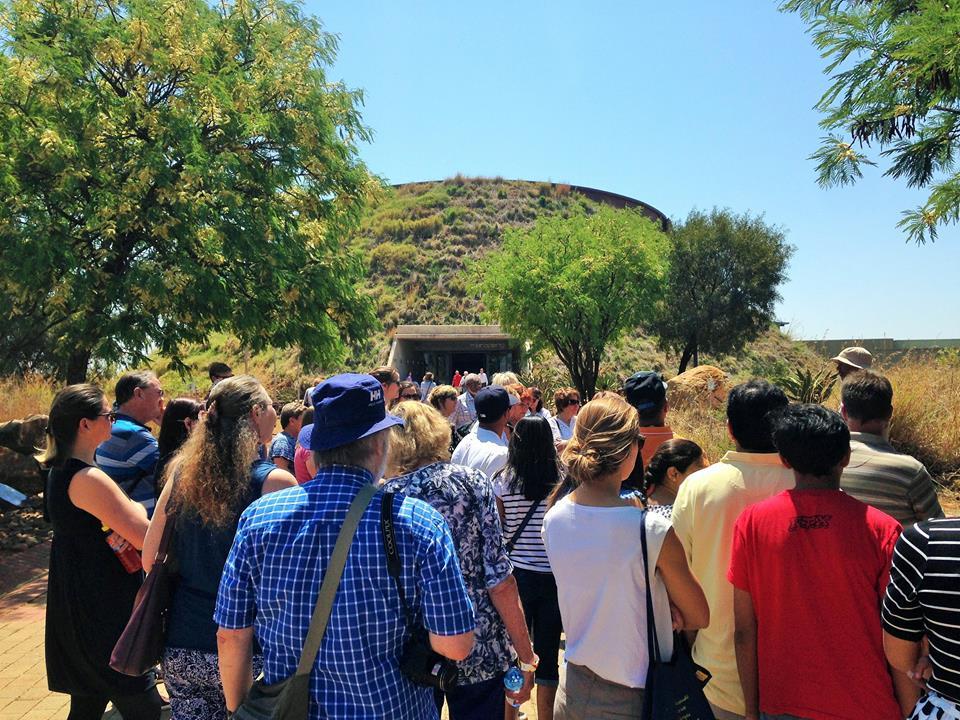
Maropeng, the Official Visitors Centre for the Cradle of Humankind World Heritage Site, is proud to announce the opening of the spectacular exhibition ‘Almost Human’ at The Gallery, Maropeng’s new temporary exhibition space on 25 May 2017.
As the Official Visitors Center for the Cradle of Humankind World Heritage Site (COH WHS), Maropeng serves as a platform to promote tourism through science by making the public aware of the cutting-edge research being undertaken in the Cradle of Humankind.
The 2013 discovery of Homo naledi, announced in September 2015 made headlines around the world. The fossil assemblage from the Dinaledi Chamber is one of the largest hominin finds in history. It is remarkable for the sheer number of fossils, the quality of preservation, and how many different individuals are represented. These fossils challenge us to take another look at what it means to be human. Work on the assemblage and at the Rising Star Site is continuing with new research being published on a regular basis. Two highlights are the findings pertaining to the date and also the discovery of a new chamber and new find.
This exhibition, ‘Almost Human’ will take the visitor on a journey of discovery. The visitor will experience the story from the time of discovery, to the collection of the fossils, the research undertaken and they will ultimately have the Homo naledi fossils and the new find revealed to them.
The COH WHS is an area of outstanding universal value. As Gauteng’s only World Heritage Site, and a premier tourism destination, the site is based on the conservation, exploration and interpretation of the story of humanity and its brand value encompasses ancient history, human beginnings, adventure, discovery and a whole lot more.
The Cradle of Humankind has more than history to offer: escape the trappings of city life and visit this World Heritage Site and its surrounds which offer an array of experiences. This picturesque countryside is a mere 45 - 90-minute drive from Johannesburg and Pretoria and is closely located to the Magaliesberg, Hartbeespoort dam; Muldersdrift and other tourism hotspots.
This state of the art exhibition space was built as part of the Gauteng Infrastructure Upgrade Project. This is the second completed construction, the first being the upgrade to the Hominin House facilities. This is yet another milestone forming part of the Gauteng Provincial Governments’ (custodians of the Cradle of Humankind World Heritage Site) ongoing infrastructure upgrades at Maropeng and the broader World Heritage Site, which has been identified as a major catalyst for tourism development and growth in the Western Corridor of Gauteng.
The opening of this exhibition, comes after the announcement of the latest research findings from the Rising Star Cave System, by Prof Lee Berger on the 9th of May 2017.
After almost two years of effort and using seven different methods (including some that require using small pieces of fossil teeth and bone), scientists concluded that the 15 individuals within the Dinaledi Chamber probably lived and died around 200,000 to 300,000 years ago. This was a big surprise because many scientists, looking at the form of Homo naledi, thought it would be much older—maybe even two million years or more. Instead, Homo naledi was living near the Cradle of Humankind and using the Rising Star Cave around the same time that our own species, Homo sapiens, first appeared (195,000 years ago in East Africa).
Even more astonishing than the recent age of the bones from the Dinaledi Chamber is the existence of a second chamber within Rising Star Cave that contains even more bones belonging to Homo naledi. Discovered, once again, by cavers Steven Tucker and Rick Hunter in the last days of the Rising Star Expedition in November 2013, this second site (Site U.W. 102) has been named the Lesedi Chamber (meaning “light” in Setswana). To date, excavations in this area have recovered two adults and an infant, all of which fall within the range of variation known for Homo naledi. This material is still being analysed but it serves to confirm the new species designation of Homo naledi and reinforces the hypothesis that this species was, for unknown reasons, regularly using Rising Star as a site to dispose of their dead.
Entrance into “Almost Human” is included in the entrance fee to the Maropeng Exhibition
Adults: R120 | Children (4-14): R65
For more information please go to www.maropeng.co.za or find us on Facebook Maropeng – Cradle of Humankind and Twitter @MaropengSA
For more information contact:
Lindsay Marshall | Curator | +27 84 400 2818 | lindsaym@maropeng.co.za
Disclaimer: Any views expressed by individuals and organisations are their own and do not in any way represent the views of The Heritage Portal.
